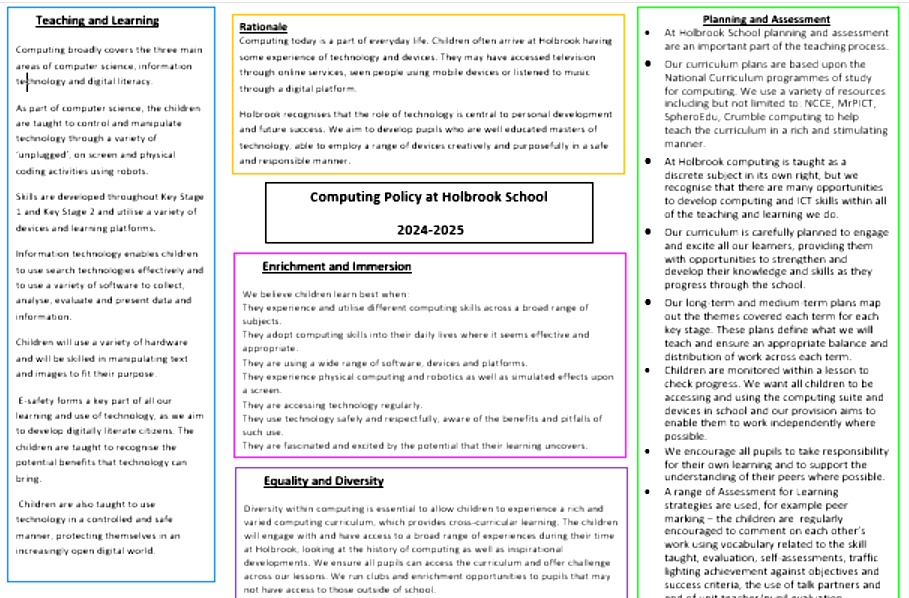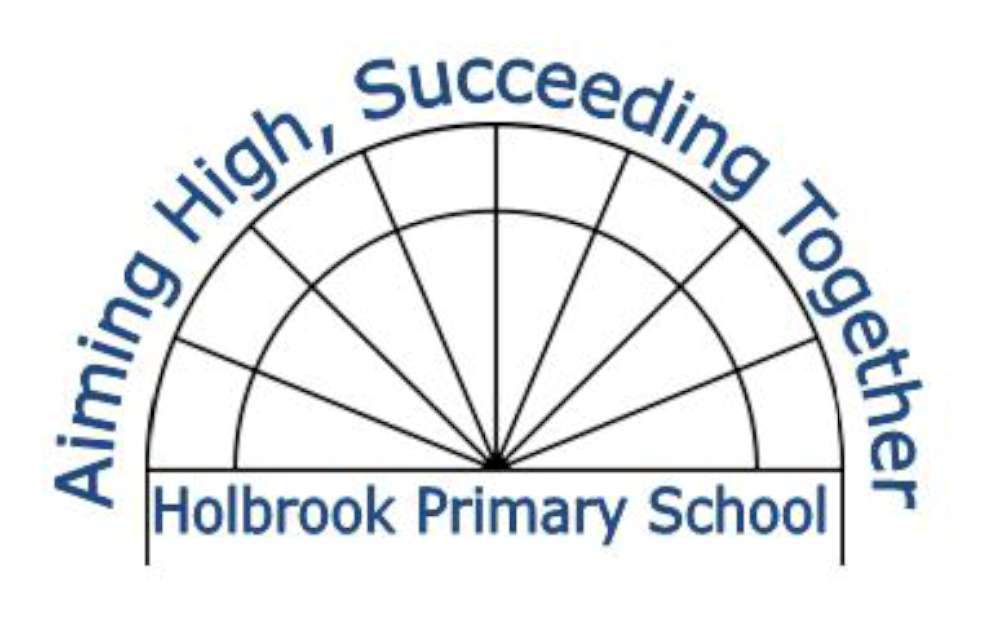Computing
Computing at Holbrook
Intent
The aim of the Holbrook computing curriculum is to ensure that children become confident and creative users of computing software and hardware. That they can interrogate information they see or receive and safely and critically know how to respond to it. That all children experience robotics throughout the school using a range of devices to challenge their programming skills. Children also use creative apps to enhance their learning; to give their work purpose.
The reason we teach computing in both discrete lessons and in a cross curricular way is to give children as many skills and knowledge across the strands of the computing curriculum. By meeting similar skills but using different software strengthens pupils knowledge and gives them resilience and transferable skills eg PowerPoint and Keynote do the same thing and are very similar to use. As is the code for spheros, scratch, crumble and microbits but they will need different blocks for each device.
Computer science, information technology and digital literacy are carefully planned so each year group expands on the previous learning. Recaps will be built in as the learner would not be able to go forward without a thorough understanding of knowledge and skill from prior learning.
Implementation
Computer science, information technology and digital literacy are carefully planned so each year group expands on the previous learning. Recaps will be built in as the learner would not be able to go forward without a thorough understanding of knowledge and skill from prior learning. We use both unplugged and on screen and physical coding activities to teach computing.
The strengths of this subject at the school is the enthusiasm of teachers to try new creative ways to teach the children to be creators rather than users of technology. This can be creating podcasts, stop motion animation, news reports using green screen, video editing and 2D and 3D drawing and modelling. We also have a great range of technology for every year group so that they can get the most out of the curriculum. Children will work independently or collaboratively in pairs or a small group. They may initially learn and practice a new skill in a group and then move towards working on a solo project showcasing those skills.
We are always expanding the ways we can teach the subject, whether by using new equipment such as spheros and microbits or apps to support all subjects. With our new computer suite, we shall have the opportunity to ensure that every child can use a PC (not just a tablet) and gain valuable skills. We shall be able to use coding platforms such as scratch, enhance our digital literacy with MS Office and Apple apps and build on creative ways to discuss and promote internet safety.
E-safety forms a key part of all our learning and use of technology, as we aim to develop digitally literate citizens. The children are taught to recognise the potential benefits that technology can bring.
Children are also taught to use technology in a controlled and safe manner, protecting themselves in an increasingly open digital world.
With the creation of Digital Leaders this year, the school will have pupil experts in each class (from Year 2/3 upwards). They will help, support and demonstrate to their peers and teachers and also run Internet Safety assemblies to the school.
Impact
We believe children learn best when:
- They experience and utilise different computing skills across a broad range of subjects.
- They adopt computing skills into their daily lives where it seems effective and appropriate.
- They are using a wide range of software, devices and platforms.
- They experience physical computing and robotics as well as simulated effects upon a screen.
- They are accessing technology regularly.
- They use technology safely and respectfully, aware of the benefits and pitfalls of such use.
- They are fascinated and excited by the potential that their learning uncovers.
Pupils leave Holbrook with strong computing skills and the ability to interrogate the wider digital world in a thoughtful and considered way.




